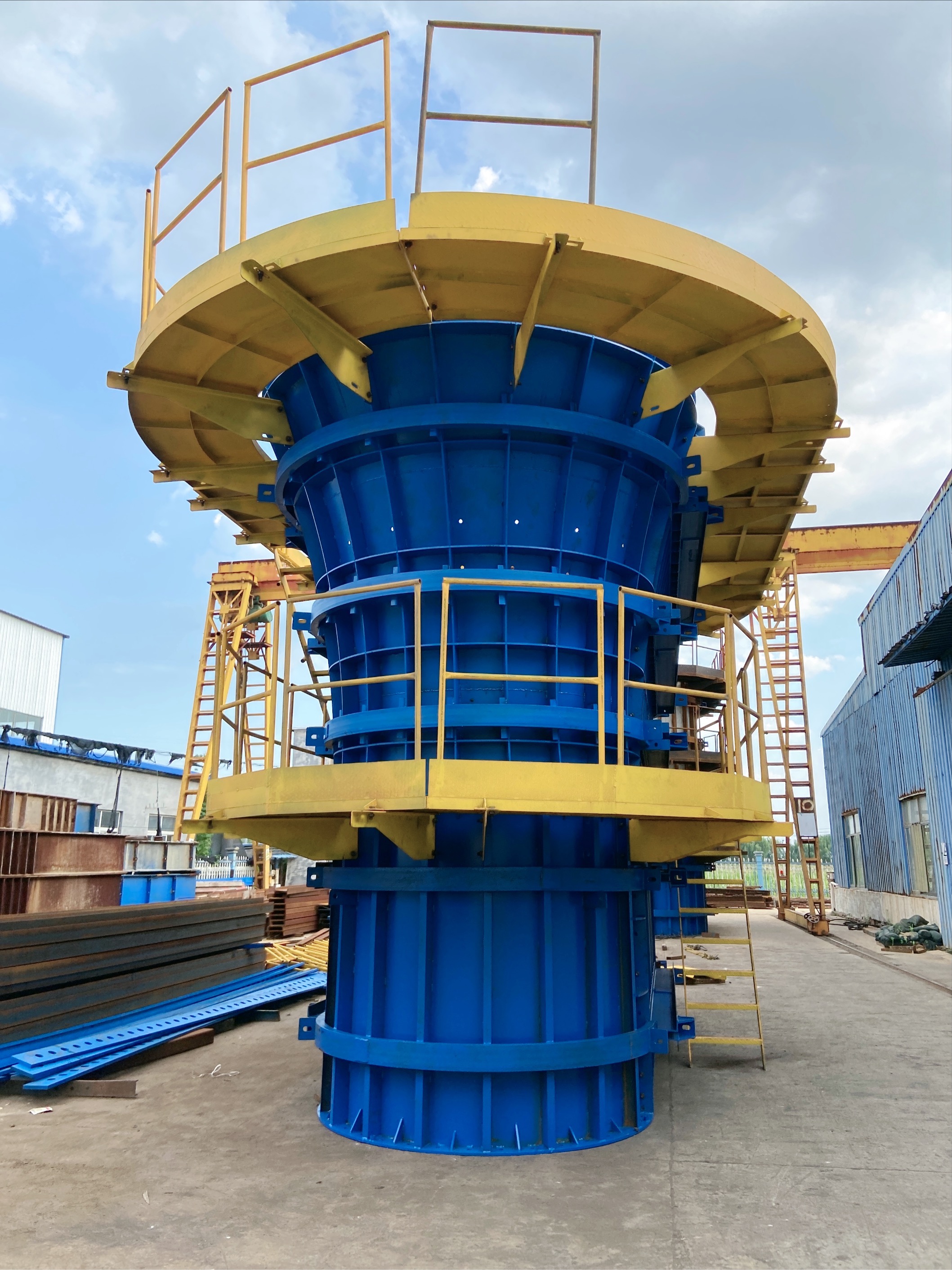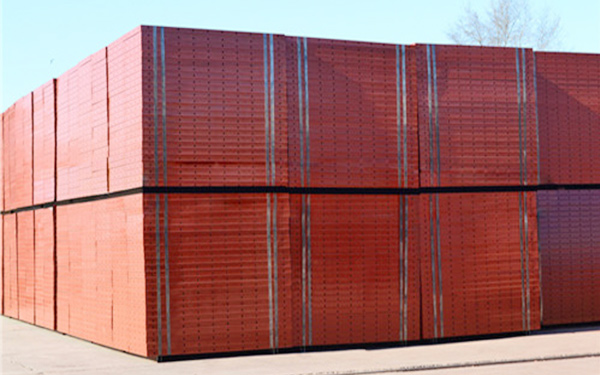Current position:
Home
News home
Industry News
Steel formwork manufacturer supply specifications: What are the applicable fields for steel formwork
Steel formwork manufacturer supply specifications: What are the applicable fields for steel formwork
source:Shandong Tianhong Heavy Industry Co., Ltd
Abstract:
Steel formwork is widely used in engineering fields that require high structural quality, construction efficiency, and cost control due to its high strength, high reusability, and precise forming ability.
1、 Large scale infrastructure projects
bridge engineering
Bridge piers and abutments: Steel formwork can withstand the lateral pressure of large volume concrete, ensuring the verticality and surface flatness of the bridge piers.
Box girder and T-beam: used for prefabricated or cast-in-place beam bodies to ensure dimensional accuracy and deformation resistance.
Bridge deck paving: modular design for quick assembly, improving construction efficiency.
Tunnel and subway engineering
Tunnel lining: The curved steel formwork adapts to the shape of the tunnel section, ensuring the compactness and impermeability of the concrete.
Subway platforms and passages: used for pouring walls and ceilings to meet high-strength load requirements.
water conservancy and hydropower engineering
Dam and gate: Corrosion resistant steel formwork is suitable for long-term humid environments, ensuring the compressive and anti-seepage performance of concrete.
Culverts and aqueducts: precise control of structural dimensions to reduce water flow resistance.
2、 High rise and super high-rise buildings
Core tube and shear wall
The high rigidity and stability of steel formwork can resist the lateral pressure of concrete, ensuring the verticality of the vertical structure of high-rise buildings.
Standardized floor slabs and beams and columns
Modular steel formwork for rapid turnover, suitable for repetitive standard floor construction (such as residential and office buildings), shortening the construction period.
Industrial plants and warehouses
The pouring of large-span beams, columns, and equipment foundations meets the high-precision requirements for heavy machinery installation.
3、 Production of prefabricated components
Prefabricated building
Prefabricated wall panels, stairs, balconies: The size accuracy of steel formwork is high (error ± 1mm), ensuring that the components are assembled tightly and seamlessly.
Composite panels and double skin walls: suitable for factory assembly line production, improving prefabrication efficiency.
Pipe gallery and pile
Circular or rectangular steel formwork is used for precast concrete pipe galleries and pipe piles to ensure structural strength and durability.
4、 Special structural engineering
Alien structure (partially customized)
By customizing curved or curved steel templates, complex shapes such as sports arena domes and airport terminals can be poured with concrete.
Fundamentals of Industrial Equipment
The foundation of large equipment in power plants and chemical plants (such as turbine bases) requires high-precision steel formwork to control the pre embedded position of bolts.
5、 Typical application cases
Engineering Type Case: Advantages of Steel Formwork
Prefabricated high bearing capacity and seawater corrosion resistance for the piers and immersed tube tunnels of the Hong Kong Zhuhai Macao Bridge
Modular and rapid construction of core tube and super high-rise floor slab of Shanghai center Building to ensure verticality
The weather resistance of the water conveyance culverts and aqueducts in the South to North Water Diversion Project is strong, reducing the risk of leakage
High speed railway platform column free canopy and large-span formwork support for track beams to ensure structural stability
6、 Scenarios not applicable to steel formwork
Small or temporary projects: Due to high initial costs, they are not suitable for short-term projects with limited budgets.
Complex irregular structures (non-standard): When a large number of customized templates are required, the cost and time investment are too high.
Construction sites lacking mechanical assistance: Steel formwork is heavy and relies on lifting equipment, making manual handling difficult.
7、 Choose Suggestions
Prioritize the engineering features of steel formwork:
High structural repetition rate (such as standardized high-rise residential buildings);
High requirements for the surface quality of concrete (such as plain concrete);
Long term humid and high load environment (such as hydraulic engineering);
Large scale projects that require rapid turnover.
Alternative solution:
Complex shapes can be supplemented with wooden or aluminum templates locally;
Small scale projects use leased steel formwork to reduce costs.
summarize
The core advantages of steel formwork are high strength, high precision, and long service life, making it particularly suitable for large-scale infrastructure, high-rise buildings, prefabricated components, and heavy industrial projects. In practical applications, it is necessary to make comprehensive decisions based on the project scale, structural characteristics, and cost budget. When necessary, it should be used in conjunction with other types of templates (such as aluminum templates and wooden templates) to achieve the optimal balance between efficiency and cost.
bridge engineering
Bridge piers and abutments: Steel formwork can withstand the lateral pressure of large volume concrete, ensuring the verticality and surface flatness of the bridge piers.
Box girder and T-beam: used for prefabricated or cast-in-place beam bodies to ensure dimensional accuracy and deformation resistance.
Bridge deck paving: modular design for quick assembly, improving construction efficiency.
Tunnel and subway engineering
Tunnel lining: The curved steel formwork adapts to the shape of the tunnel section, ensuring the compactness and impermeability of the concrete.
Subway platforms and passages: used for pouring walls and ceilings to meet high-strength load requirements.
water conservancy and hydropower engineering
Dam and gate: Corrosion resistant steel formwork is suitable for long-term humid environments, ensuring the compressive and anti-seepage performance of concrete.
Culverts and aqueducts: precise control of structural dimensions to reduce water flow resistance.
2、 High rise and super high-rise buildings
Core tube and shear wall
The high rigidity and stability of steel formwork can resist the lateral pressure of concrete, ensuring the verticality of the vertical structure of high-rise buildings.
Standardized floor slabs and beams and columns
Modular steel formwork for rapid turnover, suitable for repetitive standard floor construction (such as residential and office buildings), shortening the construction period.
Industrial plants and warehouses
The pouring of large-span beams, columns, and equipment foundations meets the high-precision requirements for heavy machinery installation.
3、 Production of prefabricated components
Prefabricated building
Prefabricated wall panels, stairs, balconies: The size accuracy of steel formwork is high (error ± 1mm), ensuring that the components are assembled tightly and seamlessly.
Composite panels and double skin walls: suitable for factory assembly line production, improving prefabrication efficiency.
Pipe gallery and pile
Circular or rectangular steel formwork is used for precast concrete pipe galleries and pipe piles to ensure structural strength and durability.
4、 Special structural engineering
Alien structure (partially customized)
By customizing curved or curved steel templates, complex shapes such as sports arena domes and airport terminals can be poured with concrete.
Fundamentals of Industrial Equipment
The foundation of large equipment in power plants and chemical plants (such as turbine bases) requires high-precision steel formwork to control the pre embedded position of bolts.
5、 Typical application cases
Engineering Type Case: Advantages of Steel Formwork
Prefabricated high bearing capacity and seawater corrosion resistance for the piers and immersed tube tunnels of the Hong Kong Zhuhai Macao Bridge
Modular and rapid construction of core tube and super high-rise floor slab of Shanghai center Building to ensure verticality
The weather resistance of the water conveyance culverts and aqueducts in the South to North Water Diversion Project is strong, reducing the risk of leakage
High speed railway platform column free canopy and large-span formwork support for track beams to ensure structural stability
6、 Scenarios not applicable to steel formwork
Small or temporary projects: Due to high initial costs, they are not suitable for short-term projects with limited budgets.
Complex irregular structures (non-standard): When a large number of customized templates are required, the cost and time investment are too high.
Construction sites lacking mechanical assistance: Steel formwork is heavy and relies on lifting equipment, making manual handling difficult.
7、 Choose Suggestions
Prioritize the engineering features of steel formwork:
High structural repetition rate (such as standardized high-rise residential buildings);
High requirements for the surface quality of concrete (such as plain concrete);
Long term humid and high load environment (such as hydraulic engineering);
Large scale projects that require rapid turnover.
Alternative solution:
Complex shapes can be supplemented with wooden or aluminum templates locally;
Small scale projects use leased steel formwork to reduce costs.
summarize
The core advantages of steel formwork are high strength, high precision, and long service life, making it particularly suitable for large-scale infrastructure, high-rise buildings, prefabricated components, and heavy industrial projects. In practical applications, it is necessary to make comprehensive decisions based on the project scale, structural characteristics, and cost budget. When necessary, it should be used in conjunction with other types of templates (such as aluminum templates and wooden templates) to achieve the optimal balance between efficiency and cost.
Disclaimer: The content provided on this website is for reference only (some information is sourced from the internet). The publication of content information is for the purpose of transmission and does not represent the views of this website. If the content involves copyright issues, please contact the website editor in a timely manner, and we will take appropriate measures to avoid unnecessary losses for both parties.
Related article
- Rental of construction steel formwork: How to choose suitable steel formwork materials?
- Customized rental of construction steel formwork: How to prevent and deal with loose joints in steel formwork?
- Pulling out Mountains and Rivers for Win Win - Jining Tianli Employees Celebrate National Day Holiday with Tug of War Competition
- Template manufacturer: What are the specific risks of grout leakage to construction safety?
- Renting steel formwork manufacturers: How much does the material of steel formwork affect the price?
- Rental price of steel formwork: Analysis of key points for concrete construction of bridge special-shaped column formwork
- Bridge steel formwork processing: How to control the deformation of steel formwork?
- List of rental prices for steel formwork: Key points for acceptance of bridge formwork after delivery to the construction site
- Manufacturers of composite steel formwork: How to evaluate the corrosion rate of the formwork?
- Customized processing of bridge steel formwork: how to prevent and deal with unstable formwork support?
- Renting Steel Formwork Rental Station: How to Determine the Material and Density of Steel Formwork?
- Customized manufacturer of composite steel formwork: How to prevent and deal with steel formwork that is not allowed to be reserved or embedded?
Hot article

- T梁模版
- Pulling out Mountains and Rivers for Win Win - Jining Tianli Employees Celebrate National Day Holiday with Tug of War Competition
- 力“拔”山兮,“河”作共赢——济宁天力员工欢度国庆假期之拔河比赛
- Pulling out Mountains and Rivers for Win Win - Jining Tianli Employees Celebrate National Day Holiday with Tug of War Competition
- Pulling out Mountains and Rivers for Win Win - Jining Tianli Employees Celebrate National Day Holiday with Tug of War Competition
- Pulling out Mountains and Rivers for Win Win - Jining Tianli Employees Celebrate National Day Holiday with Tug of War Competition
- Pulling out Mountains and Rivers for Win Win - Jining Tianli Employees Celebrate National Day Holiday with Tug of War Competition
Recommended article

Customized rental of construction steel formwork: How to prevent and deal with loose joints in steel formwork?

Customized rental of steel formwork: What are the dimensions, specifications, and models of steel formwork?
- Customized rental of construction steel formwork: How to prevent and deal with loose joints in steel formwork?
- Customized rental of steel formwork: What are the dimensions, specifications, and models of steel formwork?
- 力“拔”山兮,“河”作共赢——济宁天力员工欢度国庆假期之拔河比赛
- Pulling out Mountains and Rivers for Win Win - Jining Tianli Employees Celebrate National Day Holiday with Tug of War Competition
- Pulling out Mountains and Rivers for Win Win - Jining Tianli Employees Celebrate National Day Holiday with Tug of War Competition
- Pulling out Mountains and Rivers for Win Win - Jining Tianli Employees Celebrate National Day Holiday with Tug of War Competition
- Pulling out Mountains and Rivers for Win Win - Jining Tianli Employees Celebrate National Day Holiday with Tug of War Competition
- Pulling out Mountains and Rivers for Win Win - Jining Tianli Employees Celebrate National Day Holiday with Tug of War Competition



